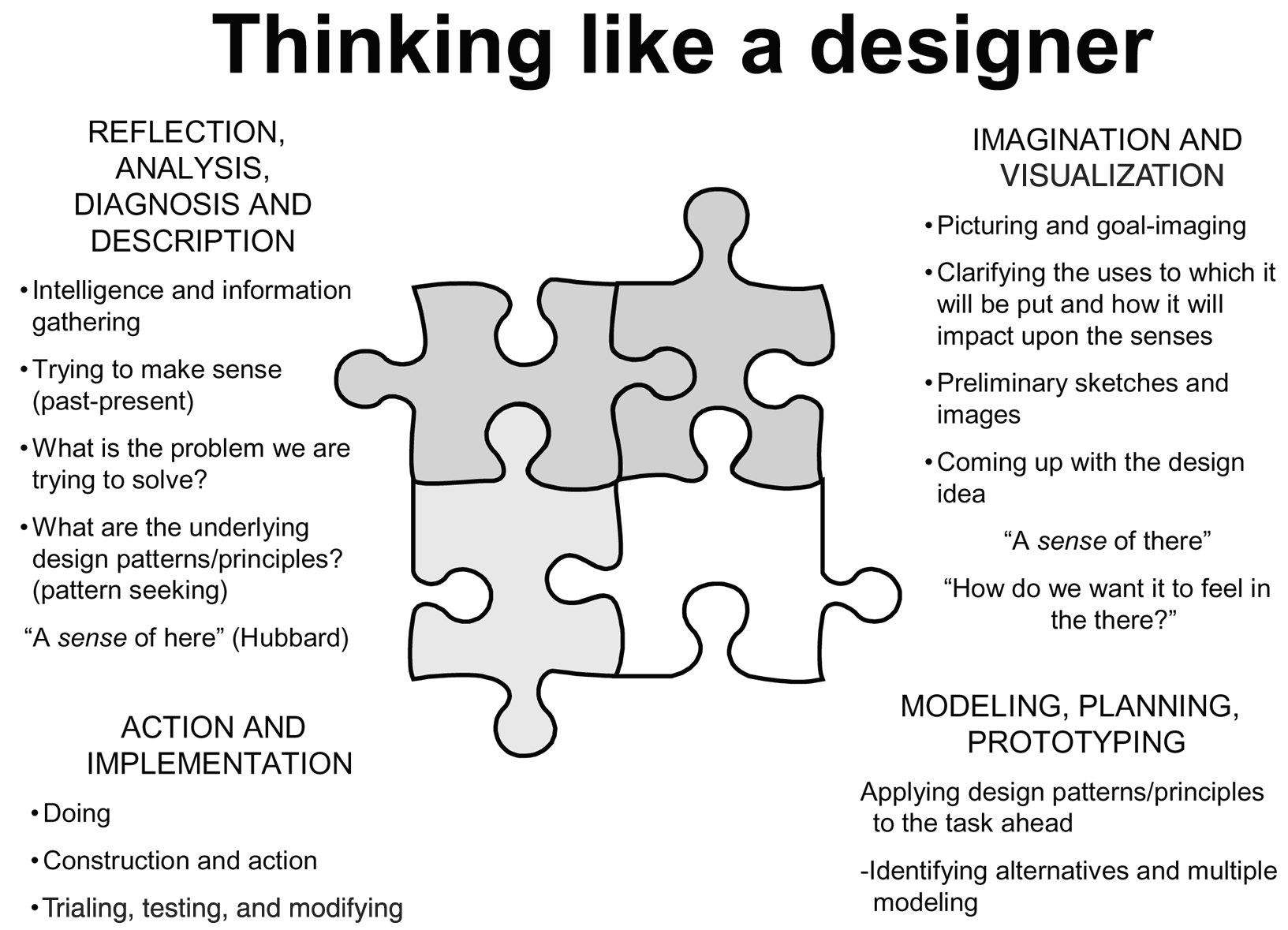In my last post, I touched on my emerging interest in the concept of design and touched back on the notion of the design turn that I covered in TU812 Managing systemic change. Since then I’ve been mulling this over and still have a number of browser tabs open in relation to the short diversionary inquiry I took into ‘design’.
I tend to associate design with creative disciplines such as architecture or the design of new ‘products’. Though recently, I have heard of the discipline of service design and its growing relevance to the public sector – see for example wikipedia entry and information on the design council website.
In management and organisations, you don’t tend to talk of ‘design’ – you talk of planning or organisational development or strategy. You may talk of designing entities – organisational structure for example but you tend to think of it as a static end-point rather than a process of becoming. The only other times I’ve used the term design is in workshop or event design where you structure a set of activities in a sequence to achieve something.
I think with hindsight this is why I struggled with the ‘design turn’ – the notion of a design turn assumes that you have already connected that what you do has a design element to it. For example, Ison had already connected his role as a writer of educational courses with designing learning systems (Ison, 2010, 261). So for him designing a systemic inquiry was a natural progression – another way of designing a (social) learning system. At the point when I studied these materials I don’t think I had connected my work to the practice of design – in conventional management, you plan to do things rather than design the future.
I wondered whether I was alone in being slow in making this connection. Was the word ‘design’ there all along but I’d just overlooked its significance.
As I started looking into this I came across a book called ‘Managing as designing’ edited by Richard Boland and Fred Callopy (2004). I have not got the book but between the amazon look inside and the google preview you can get a general gist of what it is about and where it has come from. The preface includes the line “design thinking is important for managers, but remains overlooked in much management practice and education” (page xi). This was a bit of a relief – it is not that the connection has been staring me in the face all along and I have missed it – it is just not a typical part of the management discourse.
The book itself, and a conference before it, were both motivated through the experience that the authors had with working with an architect in relation to creating a new building for their business school. This first hand experience inspired them to see how ‘traditional management’ could be much improved if it incorporated a design approach – or more of a design attitude. They contrast a ‘decision attitude’ to problem solving where solutions are given and the focus is on how to choose between them with a ‘design attitude’ to problem solving focuses on designing a great solution. To date, they say that the ‘decision attitude’ has dominated management research and education and it is time to redress the balance by developing the ‘design attitude’ as well. The first chapter of the book – written by Boland and Callopy is accessible through google books and is well worth a quick skim as is the later chapter on a ‘design vocabulary for management’.
Looking at all of this, I realise that I have worked with and come across some of the underlying ideas – it’s just that I had not connected that with ‘design’ in an explicit way.
The great thing about finding one reference is that you can then open up – a search on google scholar reveals 180 articles that have referenced Boland and Callopy – including some articles they have done themselves. Actually maybe this isn’t a ‘great thing’ – I have opened up a whole new field of exploration that I don’t have time to go into too much. It feels a bit overwhelming.
One article title that did catch my eye was Bevan et al (2007) because the authors were taking design ideas and applying them to large scale organisational change in the NHS. Their article talks of four clusters of activities that constitute “Thinking like a designer”
Their article goes onto provide an explanation of the theory behind and the practical ramifications of each of these sets of activities. It is interesting stuff….maybe one day I’ll have time to dig around some more….at least I can shut down all those browser tabs now.
References
Boland, Richard & Callopy, Fred eds., 2004. Managing as designing, Standford, CA: Stanford University Press. see amazon entry here)
Bevan, Helen et al., 2007. Using a Design Approach to Assist Large-Scale Organizational Change. Journal of Applied Behavioural Science, 43(1), pp.135-152.
Ison, R. (2010) Systems Practice: how to act in a climate-change world, Springer/Open University, London/Milton Keynes



dearest helen
How i enjoyed this post. I had conceptualised the ‘design turn’ in a complete different way, as connecting to new actors, involving different activities, a very groundlevel view. I love the idea as seeing it as ‘designing a solution’. Now i will have to reflect on what this could actually mean in practice.
After almost 6 months of non-study and enjoying waking up at the same time as other humans, I am so glad you are still keeping the candle burning
Arwen
It’s a while since a wrote this blog, but I’ve just had the following YouTube video pointed out to me. Covers the key points of the Managing as Designing ideas
Pingback: Just Practicing − Returning to the ‘design turn’